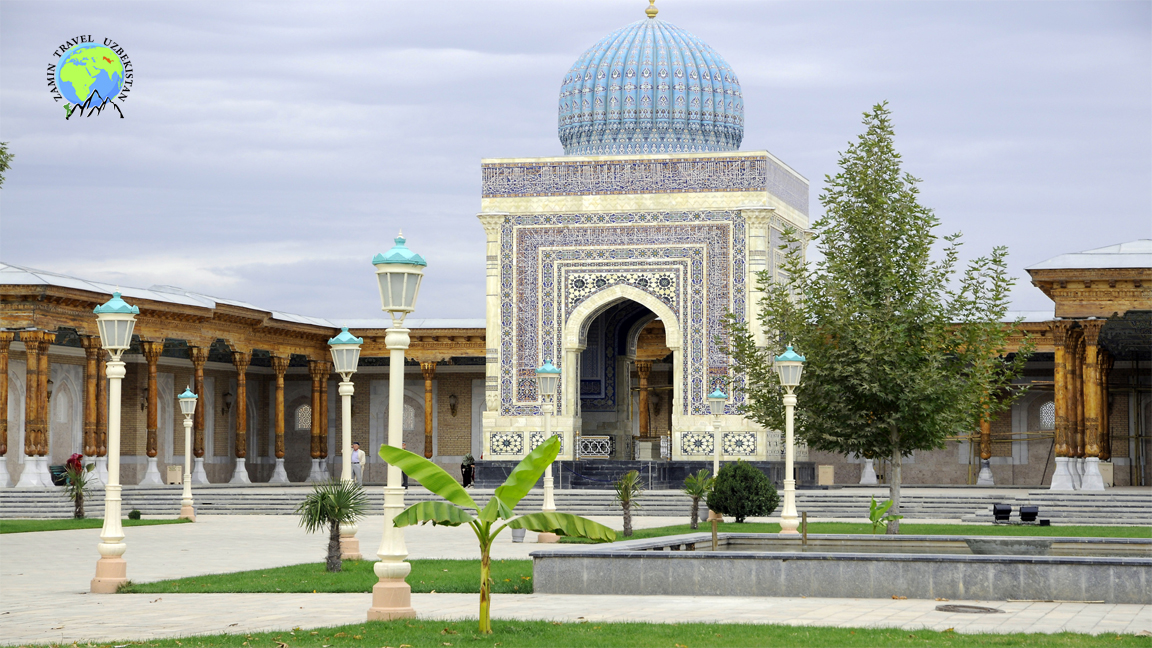


Imam al-Bukhari complex
About 12 km from Samarkand, in Hortang village, one of the relics of the Muslim world is the Imam Al-Bukhari complex. The eminent Sunni theologian Imam Muhammad ibn Ismail Abu Abdallah Al-Bukhari is known as the author of the most famous book after the Holy Quran, Al-Jami-al-Sahih, which contains a collection of the authentic hadiths, actions and sayings of the Prophet Muhammad. Imam Al-Bukhari was born in Bukhara in 810. He grew up as an orphan at an early age. As a child he began to study theological sciences; above all he was interested in the study of hadiths. At the age of ten he was allowed to take part in theological debates because of his knowledge. Theologians were amazed at his expressive reading and thorough interpretation of the Prophet's hadith. When Al-Bukhari was 15 years old, he made a pilgrimage to Mecca and Medina with his stepmother and older brother. Driven by a thirst for knowledge, he traveled to Damascus, Cairo, Basra, Baghdad, Hijaz and Kufa. He collected and wrote hadith from the cities he visited. Al-Bukhari selected 7,275 of the almost 600,000 hadiths he had collected, which he classified as “trustworthy”. In his book Al-Jami al-Saheeh, he classified them according to subject; they consist of sections on historical, biographical, legal, ethical and medical issues. Many of the hadiths from this book were subsequently incorporated into the Islamic law book "Shariyat" and gained the status of laws for believers. Imam Al-Bukhari has written more than 20 theological works. At the end of his life, Al-Bukhari returned home - to Bukhara. Emir Halid ibn Ahmad wanted to glorify philosophers, he should live in his palace and teach his sons. According to the legend, the Imam declared, “I will not humiliate science by carrying it to the palaces. If you need knowledge, you should acquire it yourself. God will forgive me for never hiding my knowledge and always giving it to those who have studied. "
The Emir of Bukhara ordered him to leave the city. Old Al-Bukhari went to Samarkand. But on the way to the old city he fell ill and died in the Hartang settlement 870 at the age of 60. The place where Imam Al-Bukhari is buried has become a sacred place. In the 16th century, a small crypt and mosque were built over his grave, and trees surrounded the sacred place. Over time, these structures became dilapidated and a memorial was erected in 1998. The complex includes a mausoleum, a mosque that can accommodate 1,500 worshipers. Imam Al-Bukhari's mausoleum is built on the axis in an architectural complex with a 16-meter dome; the interior is decorated with stucco, fretwork, marble and granite. In the middle of the mausoleum there is a tombstone, a sagana - the light blue onyx.
Through the carved door, down the stairs, one can visit a special room called “Dahma”, Al-Bukhari's tomb. Behind the mausoleum there is the "Dorus Hadis Education Center" for studying the hadith. The walls of the Imam Al-Bukhari Mosque are covered with glazed bricks. The Muslim relic "Kisva", the Kaaba fabric, handed over to Uzbekistan by the King of Saudi Arabia, hangs on the Mikhrab niche.